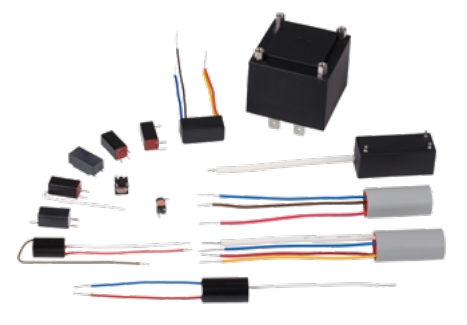Xenon Lamps & Modules
- * Peak output voltage up to 40kV
- * Load current up to 80A RMS
- * Surface mount, through hole or hardware mounted
- * Flexible design
- * Various size
본문
The process of affecting the initial ionisation of a flash lamp is called ‘triggering’.
Most flash lamp applications use a trigger coil to generate a high-voltage pulse of short duration, usually a few microseconds or less.
Two types of circuits and transformers are used to introduce the voltage required to achieve a series of injection triggering and external triggering with associated coils.
used to introduce the voltage needed to achieve external triggering.
External triggering uses a high-voltage trigger pulse to create a thin ionised streamer between the anode and cathode within the lamp.
Connecting this voltage to the lamp can be done by wrapping a thin nickel wire around it or using a metal stripe on the surface of the lamp envelope.
This type of trigger coil is typically lighter, smaller, and less expensive than those used for series jet triggering.
Series triggering provides higher timing accuracy and is often used with liquid cooled lamps in lasers.
Trigger coils are typically larger in size as they must cope with lamp currents on the order of thousands of amps as well as generating HV ignition
첨부파일
-
Excelitas_Flashlamps_Overview_Brochure.pdf (1.5M)
1회 다운로드 | DATE : 2024-10-17 16:20:13 -
STS 36.pdf (55.2K)
1회 다운로드 | DATE : 2024-10-17 16:20:13 -
ZS1031.pdf (89.8K)
1회 다운로드 | DATE : 2024-10-17 16:20:13 -
ZS1052H.PDF (61.1K)
0회 다운로드 | DATE : 2024-10-17 16:20:13 -
ZS1052EQH.PDF (57.3K)
0회 다운로드 | DATE : 2024-10-17 16:20:13 -
ZS1092.pdf (248.0K)
1회 다운로드 | DATE : 2024-10-17 16:20:13

